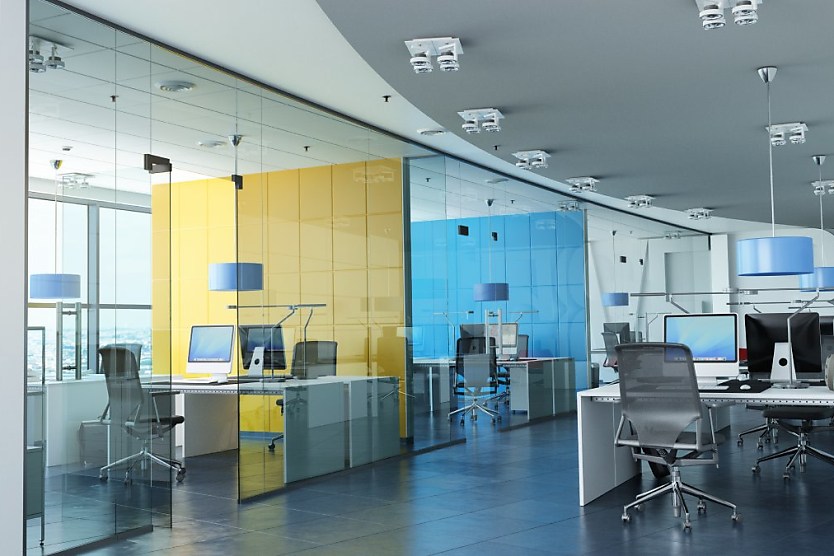
Is the bad decor in your workplace ruining your job experience? The power of colour is underrated, and it could affect how employees interact with their workplace.
With hybrid working becoming the norm, employers are still striving to get their employees back into the office, even if it is only a couple of days throughout the week. Brett McAllen, chief executive of @WORKSPACES, believes that colour and the decor of a workplace can have a huge effect on the experience, mood, and sleep schedule of staff.
"Thanks to the work of Isaac Newton, the power of light as a therapeutic tool has become a key area of interest and one which is continually explored and studied to better understand how colours affect human psychology and action,” McAllen said.
In the context of business, McAllen explained the effect that different colours tend to have on staff and their productivity and creative energy.
Blue, the best colour for efficiency: “Blue enjoys the reputation of being the ultimate colour to promote wellbeing and efficiency. According to research conducted by Lund University, a blue-coloured room is particularly beneficial to those working in fast-paced environments,” McAllen said.
“Seen as a colour of harmony, it can be stress relieving, too; however, it’s important to choose the right shade of blue; otherwise, some people might find it depressing and sad. The colour blue can also come across as rather cold and uninviting, so it’s recommended to test how the colour looks in both natural and artificial lighting.”
Green, for calm and harmony: “Similar to blue, the colour green is seen as calming due to its connection to nature and life. It’s closely linked with positive emotions and symbolises growth, life and renewal, and gives people a sense of security,” McAllen said.
“This is also why it’s always recommended for offices to have some indoor plants because it’s been known to boost productivity and creativity as well as the overall happiness of workers. And while the colour may be less stimulating, green can increase the overall wellbeing of the people who work in your office and also helps people with longer focus and attention.”
White, for clean and clinical environments: “It’s a no-brainer that white is associated with cleanliness; however, white office spaces generally are considered to be more boring and uninspiring, so it’s probably not the best colour for productivity and creativity. However, white continues to be a popular choice because of its ability to make a space feel bigger and cleaner, which can be particularly a good option for smaller workforces. When used with other colours, then the look of the office become more tailored and interesting,” McAllen said.
“Why not invite staff to bring in their own pots of colour to warm up their workspace? It could be a coffee cup, pot plant, notepad, photo frame or something else. White provides a great base to work from and gives staff with the ability to creatively invest in the workspace.”
Red, for active stimulation: “Red is known as a stimulating colour and is often associated with power. A statement red wall in an office can be a great way to boost stimulation, but be careful not to overdo it as your workers may end up stressed and anxious,” McAllen said.
“Perhaps opt for red accessories to add energy without overdoing it. On the colour wheel, red is the most attention-grabbing colour and is often chosen by companies for their packaging to stand out.”
Yellow, the colour of happiness: “Some of the most common emotions associated with the colour yellow include happiness, excitement, youthfulness, enthusiasm, creativity and confidence. It’s seen as a high power sort of colour, which is why we so often see it used in innovation labs and creative spaces,” McAllen said.
“Interestingly, yellow backgrounds have been shown to increase information retention; however, it’s also recommended to use yellow sparingly because it can cause eye fatigue.”
McAllen stressed the importance of different colours and the ranging effects they can have throughout the workplace, and he believes it can have a dramatic impact. Understanding the different visual signs and messages that colours evoke is the first step in using colour to improve your workplace space.
If employers are looking for out-of-the-ordinary tools to attract staff back to the workplace, then incorporating colour could be an ideal strategy. The key to doing this, however, is to involve the workers with the colour implementation, thus creating a connection between the worker and the workplace. This could create a sense of ownership, pride and comfort in their workplace.
Kace O'Neill
Kace O'Neill is a Graduate Journalist for HR Leader. Kace studied Media Communications and Maori studies at the University of Otago, he has a passion for sports and storytelling.










